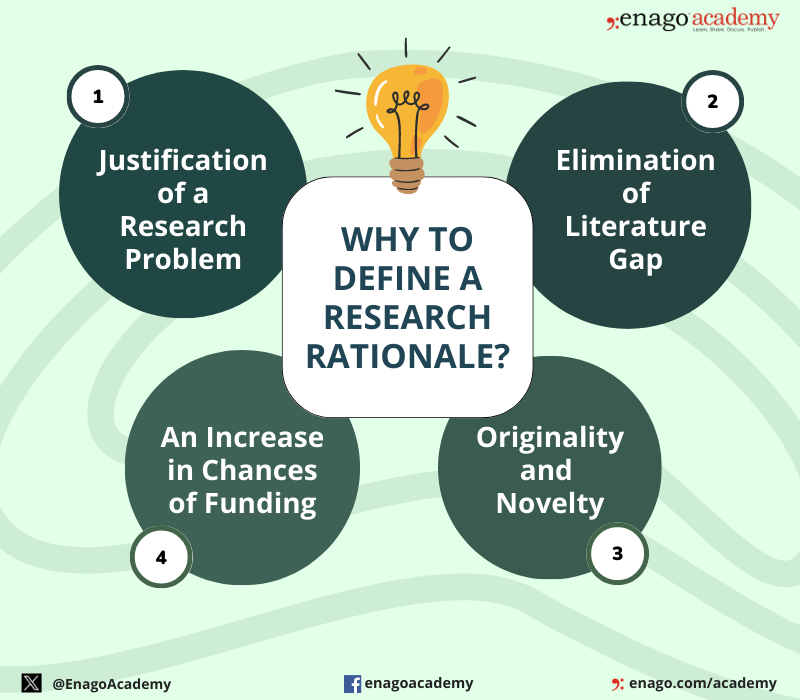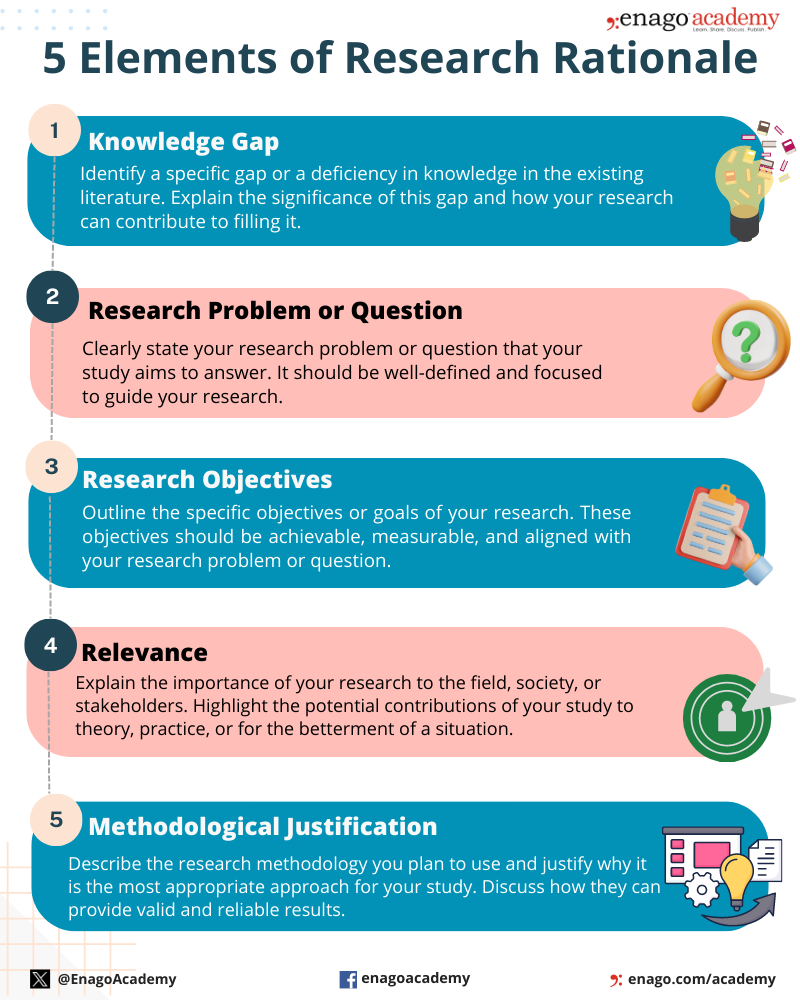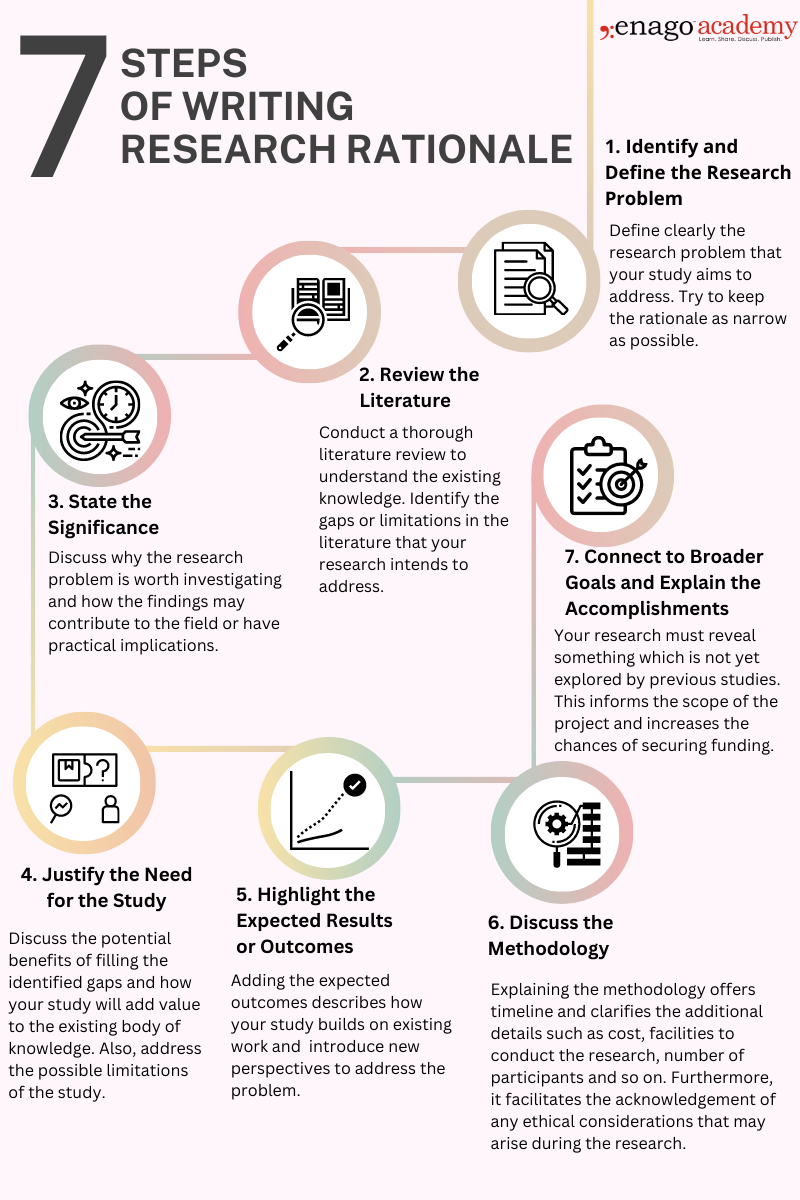Setting Rationale in Research: Cracking the code for excelling at research

Knowledge and curiosity lays the foundation of scientific progress. The quest for knowledge has always been a timeless endeavor. Scholars seek reasons to explain the phenomena they observe, paving way for development of research. Every investigation should offer clarity and a well-defined rationale in research is a cornerstone upon which the entire study can be built.
Research rationale is the heartbeat of every academic pursuit as it guides the researchers to unlock the untouched areas of their field. Additionally, it illuminates the gaps in the existing knowledge, and identifies the potential contributions that the study aims to make.
What Is Research Rationale and When Is It Written
Research rationale is the “why” behind every academic research. It not only frames the study but also outlines its objectives, questions, and expected outcomes. Additionally, it helps to identify the potential limitations of the study. It serves as a lighthouse for researchers that guides through data collection and analysis, ensuring their efforts remain focused and purposeful.
Typically, a rationale is written at the beginning of the research proposal or research paper. It is an essential component of the introduction section and provides the foundation for the entire study. Furthermore, it provides a clear understanding of the purpose and significance of the research to the readers before delving into the specific details of the study. In some cases, the rationale is written before the methodology, data analysis, and other sections. Also, it serves as the justification for the research, and how it contributes to the field.
Defining a research rationale can help a researcher in following ways:

1. Justification of a Research Problem
- Research rationale helps to understand the essence of a research problem.
- It designs the right approach to solve a problem. This aspect is particularly important for applied research, where the outcomes can have real-world relevance and impact.
- Also, it explains why the study is worth conducting and why resources should be allocated to pursue it.
- Additionally, it guides a researcher to highlight the benefits and implications of a strategy.
2. Elimination of Literature Gap
- Research rationale helps to ideate new topics which are less addressed.
- Additionally, it offers fresh perspectives on existing research and discusses the shortcomings in previous studies.
- It shows that your study aims to contribute to filling these gaps and advancing the field’s understanding.
3. Originality and Novelty
- The rationale highlights the unique aspects of your research and how it differs from previous studies.
- Furthermore, it explains why your research adds something new to the field and how it expands upon existing knowledge.
- It highlights how your findings might contribute to a better understanding of a particular issue or problem and potentially lead to positive changes.
- Besides these benefits, it provides a personal motivation to the researchers. In some cases, researchers might have personal experiences or interests that drive their desire to investigate a particular topic.
4. An Increase in Chances of Funding
- It is essential to convince funding agencies, supervisors, or reviewers, that a research is worth pursuing.
- Therefore, a good rationale can get your research approved for funding and increases your chances of getting published in journals; as it addresses the potential knowledge gap in existing research.
Overall, research rationale is essential for providing a clear and convincing argument for the value and importance of your research study, setting the stage for the rest of the research proposal or manuscript. Furthermore, it helps establish the context for your work and enables others to understand the purpose and potential impact of your research.
5 Key Elements of a Research Rationale
Research rationale must include certain components which make it more impactful. Here are the key elements of a research rationale:

By incorporating these elements, you provide a strong and convincing case for the legitimacy of your research, which is essential for gaining support and approval from academic institutions, funding agencies, or other stakeholders.
How to Write a Rationale in Research
Writing a rationale requires careful consideration of the reasons for conducting the study. It is usually written in the present tense.
Here are some steps to guide you through the process of writing a research rationale:

After writing the initial draft, it is essential to review and revise the research rationale to ensure that it effectively communicates the purpose of your research. The research rationale should be persuasive and compelling, convincing readers that your study is worthwhile and deserves their attention.
How Long Should a Research Rationale be?
Although there is no pre-defined length for a rationale in research, its length may vary depending on the specific requirements of the research project. It also depends on the academic institution or organization, and the guidelines set by the research advisor or funding agency. In general, a research rationale is usually a concise and focused document.
Typically, it ranges from a few paragraphs to a few pages, but it is usually recommended to keep it as crisp as possible while ensuring all the essential elements are adequately covered. The length of a research rationale can be roughly as follows:
1. For Research Proposal:
A. Around 1 to 3 pages
B. Ensure clear and comprehensive explanation of the research question, its significance, literature review, and methodological approach.
2. Thesis or Dissertation:
A. Around 3 to 5 pages
B. Ensure an extensive coverage of the literature review, theoretical framework, and research objectives to provide a robust justification for the study.
3. Journal Article:
A. Usually concise. Ranges from few paragraphs to one page
B. The research rationale is typically included as part of the introduction section
However, remember that the quality and content of the research rationale are more important than its length. The reasons for conducting the research should be well-structured, clear, and persuasive when presented. Always adhere to the specific institution or publication guidelines.
Example of a Research Rationale

In conclusion, the research rationale serves as the cornerstone of a well-designed and successful research project. It ensures that research efforts are focused, meaningful, and ethically sound. Additionally, it provides a comprehensive and logical justification for embarking on a specific investigation. Therefore, by identifying research gaps, defining clear objectives, emphasizing significance, explaining the chosen methodology, addressing ethical considerations, and recognizing potential limitations, researchers can lay the groundwork for impactful and valuable contributions to the scientific community.
So, are you ready to delve deeper into the world of research and hone your academic writing skills? Explore Enago Academy‘s comprehensive resources and courses to elevate your research and make a lasting impact in your field. Also, share your thoughts and experiences in the form of an article or a thought piece on Enago Academy’s Open Platform.
Join us on a journey of scholarly excellence today!
Frequently Asked Questions
A rationale of the study can be written by including the following points:
1. Background of the Research/ Study
2. Identifying the Knowledge Gap
3. An Overview of the Goals and Objectives of the Study
4. Methodology and its Significance
5. Relevance of the Research
Start writing a research rationale by defining the research problem and discussing the literature gap associated with it.
A research rationale can be ended by discussing the expected results and summarizing the need of the study.
A rationale for thesis can be made by covering the following points:
1. Extensive coverage of the existing literature
2. Explaining the knowledge gap
3. Provide the framework and objectives of the study
4. Provide a robust justification for the study/ research
5. Highlight the potential of the research and the expected outcomes
A rationale for dissertation can be made by covering the following points:
1. Highlight the existing reference
2. Bridge the gap and establish the context of your research
3. Describe the problem and the objectives
4. Give an overview of the methodology









